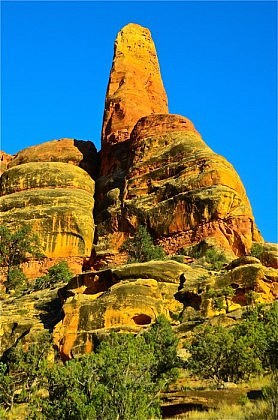In the previous installment, I discussed some of the basic principles of Acute Mountain Sickness, or AMS for short (the medical field loves acronyms). I also mentioned that most of our clients on our Wyoming, Montana and Yellowstone backpacking trips come from near sea level, which means they need to acclimate. Fortunately, there are a number of relatively simple things folks can do to help assure a relatively painless transition into the realm of thin mountain air.
First, adjust your travel schedule! Plan to arrive in Wyoming or Montana the day before the day of the evening pre-trip safety/orientation meeting. So if the first day of the trip is the 4th, plan to arrive on the 2nd, if you can. We often meet our groups in Jackson, Wyoming (elevation 6,200 feet) or Bozeman, Montana (elevation 4,600 feet), so by arriving early you can begin to put a dent in that initial 48 hour period when your body rapidly acclimates. Of course, on the trail you’ll still be higher than in town, but arriving an extra day early will help!
Out in the wilds, your best defense against AMS is to drink lots of water. Hydrate! Good hydration speeds the physiological adaptation to thin air. Carry as much water as you can — in your belly, not on your back. In addition, it is a good idea to “hike high and sleep low” at least for the first 2 or 3 days, though that is not always possible, depending upon the route and the trip plan. Sometimes camp is at the high point of the day, so again, your best defense is to drink lots of water. If you have a headache, a normal dose of ibuprofen will usually do the trick. Medical tests have also proven the value of “Pursed Lips Breathing” (PLB) to improve oxygen/carbon dioxide exchange at altitude. You simply purse your lips and breathe in, then you quickly “blow out the candle at arm’s length”. And repeat. Of course the simple common sense act of slowing down your hiking pace early in the trip, is an obvious no-brainer.
For those who know that they have a severe susceptibility to AMS, there is always the pharmacist. After all, this is America and people expect a drug for every malady! And in the case of AMS, there is at least one. It is called Diamox, and it is a prescription drug that can be taken prophylactically in order to speed up the acclimation process. And it works. Possible side effects include increased urination, so of course, this means that you’ll have to drink up even more to avoid dehydration, but again, the stuff works. There may also be other such products available about which I am unaware. But if you know from past experience that you have trouble at altitude, please consult your physician.
See you in the high country!



